Ivrea – a small town in Piedmont, in the past the most import computing center in Italy, today it is looking for an idea to restore prosperity. Usually quite, rather sleepy place, explodes with emotions during the last days of carnival. Every year from Sunday to Fat Tuesday an unique battle of the oranges (battaglia delle arance) takes place.

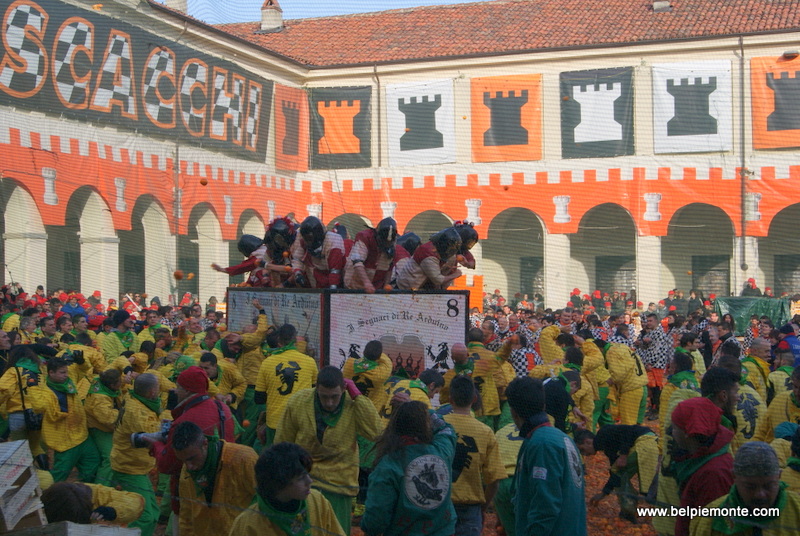

Feudal lord’s guards on horse- pulled trucks (aranceri sui carri da getto), loads of rebelled people against hated tyrant – aranceri a piedi (orange throwers on foot) and omnipresent oranges: in air, on the ground, in one piece, smashed and served as freshly squeezed juice…Not to mention about an amazing mix of good fun and aggression. It’s how I can describe just in few words how a big fight using each year hundreds of tons of citruses.

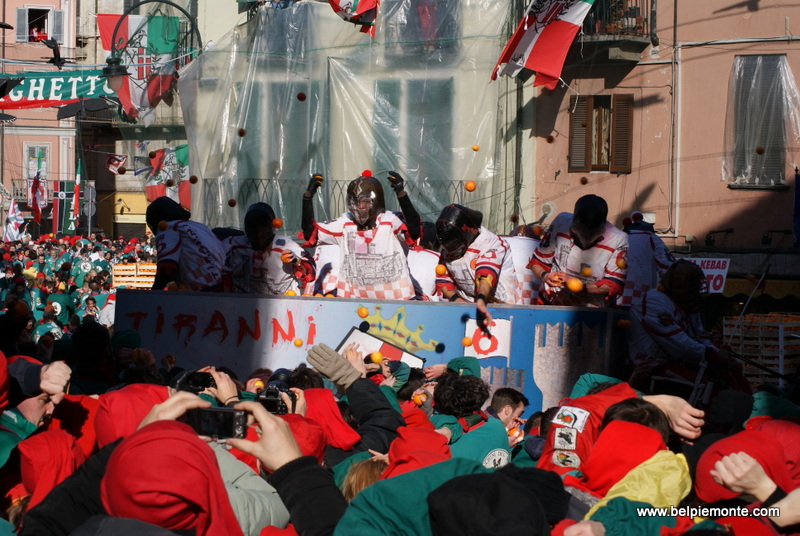
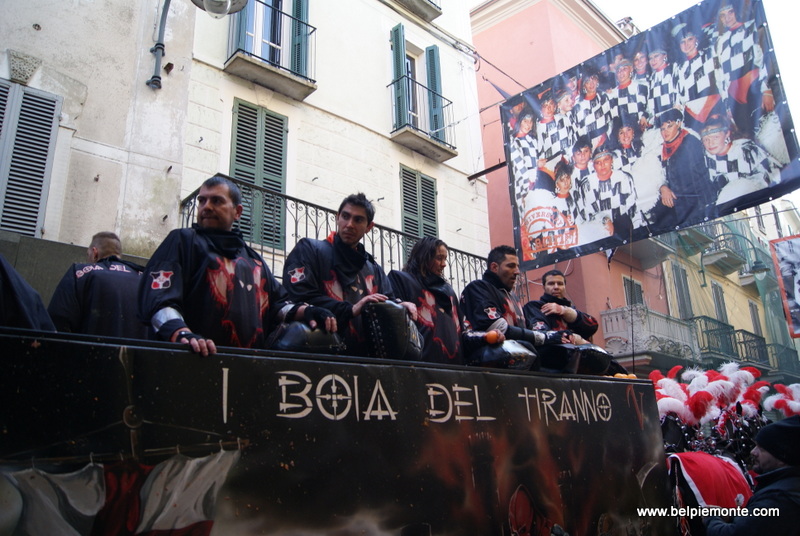
The carnival of Ivrea is a kind of show narrating a real revolt that happened in Middle Ages, enriched with some elements of legend. According to the local myth a beautiful miller’s daughter (La Mugnaia) named Violetta was taken by force to the Baron’s castle. When hated tyrant claimed the right of the first night, newlywed woman got him drunk and killed him. In that time her appearance in the castle window with his head in hand stared the rebellion and nowadays in the evening before the battle the official presentation of Violetta (whose identity is kept secret till the end) on the balcony of the Town Hall building kicks off celebrations.
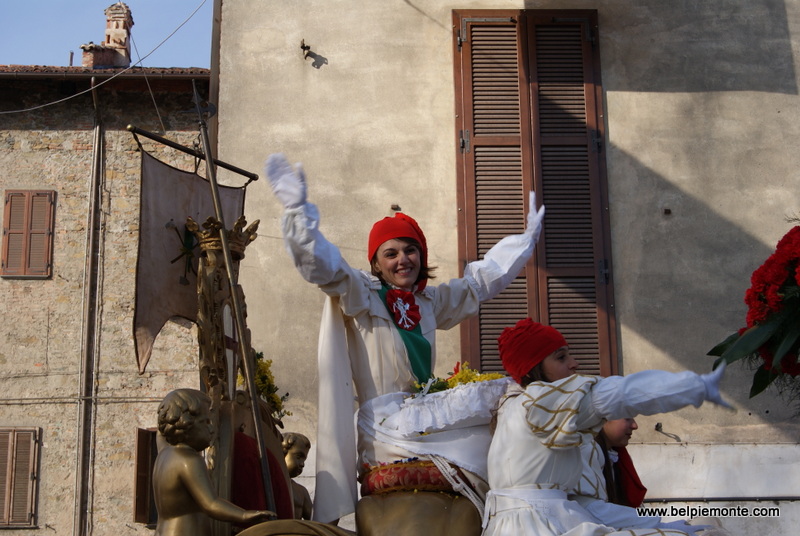
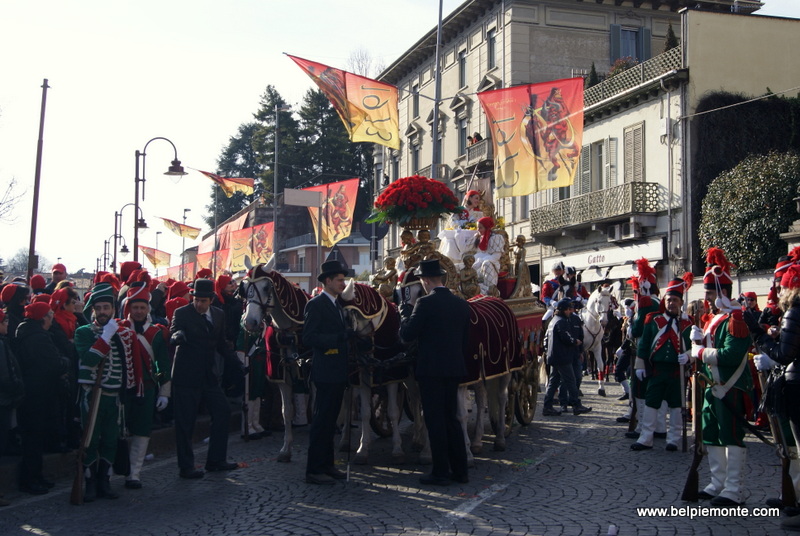
La Mugnaia became local heroine and she is a real star in a colorful procession (il Corteo Storico) marching on the town’s streets simultaneously to the battle. The miller’s daughter, in golden carriage, dressed in a traditional white wedding dress salutes cheering crowd, throws candies and small mimosa branches. The General – another important character of the celebrations, Napoleonic authority representative, supported by general staff – assures a smooth running of the event. In the parade can’t be missed the orchestra, kids dressed in traditional renaissance costumes (Abba’) or the representatives of town authority, for example.
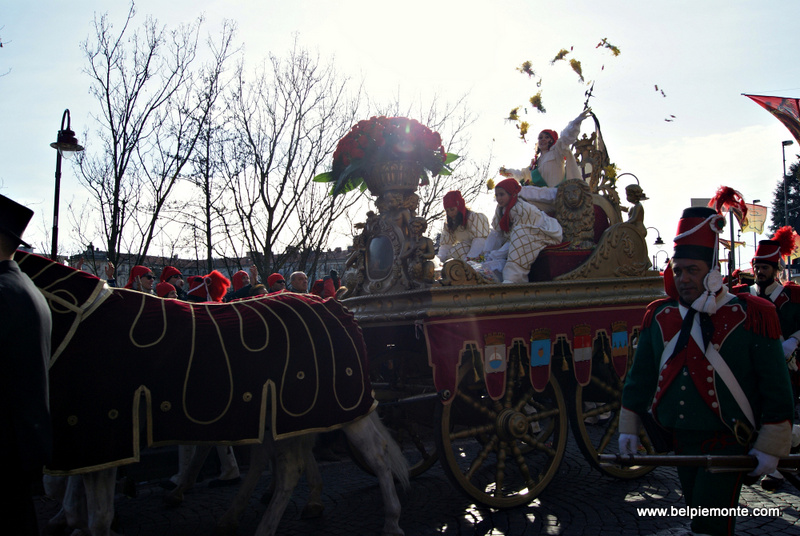
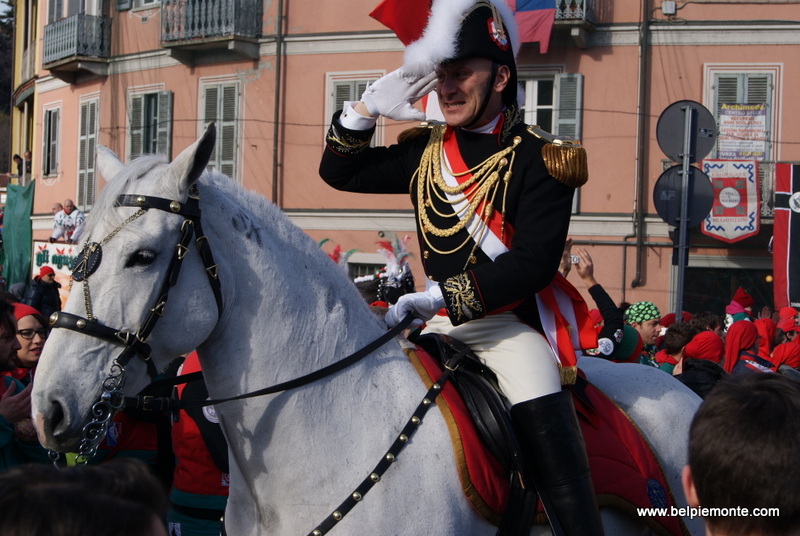
The performance is watched by the sea of red heads. Spectators, passers-by, tourists and town residents – everybody is wearing a characteristic, similar to a big sock, Phrygian cap (berretto frigio) on head. In Europe during the French Revolution it became the icon of freedom, and today it protects against the cold and oranges – people with a red hat on head can’t be attacked by aranceri.


The history of the carnival of Ivrea dates back to the beginning of 19th century, to 1808 precisely. In that time Piedmont was under Napoleon occupation and that’s why in procession there are such figures like the General or representatives of French army. The tradition of miller’s daughter started in 1858, and the battle of the oranges, in an organized form, born in the mid 20th century. And despite a big risk of being injured in a battle and the cost of privilege to throw oranges (aranceri on foot, for example, needed to pay about 90-100 € for 3 days), it attracts every year townspeople to take part in a common fight and tourists as curious spectators.


For a dessert link to a short movie I found on YouTube. It shows very well atmosphere of the event:
httpv://www.youtube.com/watch?v=orJgH1UeZpI
And below a traditional song telling the history we can be a witness during last three days of this amazing carnival (in Italian):
Una volta anticamente / egli è certo che un Barone
Ci trattava duramente / Con la corda e col bastone;
D’in sull’alto Castellazzo, /Dove avea covile e possa,
Sghignazzando a mo’ di pazzo /Ci mangiava polpa ed ossa.
Ma la figlia d’un mugnaro / Gli ha insegnato la creanza,
Che rapita all’uom più caro /Volea farne la sua ganza.
Ma quell’altra prese impegno /Di trattarlo a tu per tu:
Quello è stato il nostro segno, /E il Castello non c’è più.
E sui ruderi ammucchiati, /Dame e prodi in bella mostra,
Sotto scarli inalberati /Noi veniamo a far la giostra:
Su quei greppi, tra quei muri, /Che alla belva furon tana,
Suonan pifferi e tamburi /La vittoria popolana.
Non v’è povero quartiere /Che non sfoggi un po’ di gale,
Che non canti con piacere /La Canzon del Carnevale.
Con la Sposa e col Garzone /Che ad Abbà prescelto fu,
Va cantando ogni rione: /Il Castello non c’è più.
